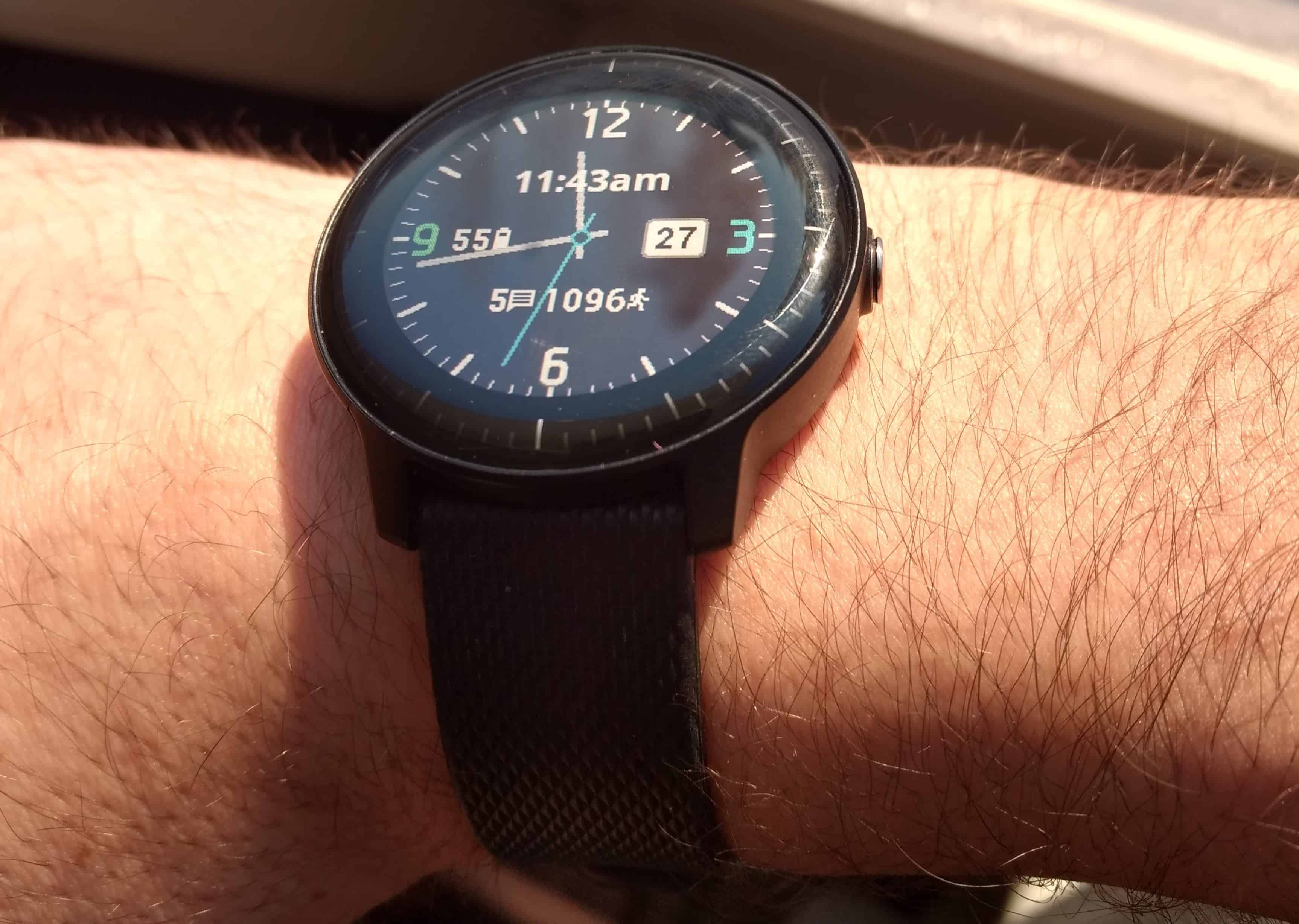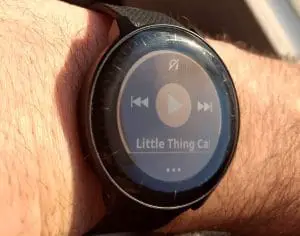Smartwatches can do many things that your smartphone can’t. Benefits include tracking your heart rate, sleep, activity and overall fitness level. You can also play music and do phone free activities and even pay at the store.
What benefits do Smartwatches provide?
I have used smartwatches and fitness trackers for multiple years and I decided to do some research to complement my own view of what actually are the benefits of using these devices. So what are the benefits of smartwatches? Smartwatches provide easy access to some of the smartphone applications and also provide sensor data like heart rate monitoring and sleep tracking which isn’t available on smartphones. Check further along in this article the extensive list and descriptions of smartwatch functionality.
Did you come to this article because you are thinking about buying a smartwatch or fitness tracker but are not entirely sure yet does the investment pay off? I certainly think it does. You can check my smartwatch and fitness trackers buyers guide with recommendations for every budget starting from under $50. Not convinced yet, check my video below on the top 5 features smartwatches provide.
What is a Smartwatch
Smartwatches are wearable computers in the form of wristwatches providing more features besides timekeeping. They often include integration to your smartphone showing your incoming calls and messages and some apps with additional functionality like weather information and maps for directions.
Smartwatches provide an extension to your smartphone showing some of the content you could see on your phone but without reaching for your phone. Another thing smartwatches provide is different sensors for fitness and health tracking. Step counting, Heart Rate Monitoring, and GPS are some of the features that may come with a smartwatch.
Smartwatch vs Smartphone
Smartphones can do many of the things you can do on a smartwatch but smartwatches are better suited for some things depending on the circumstances. While driving a car or bike it’s much more convenient to check notifications on your smartwatch than try to get your phone from the pocket. It’s nice to see for example the name of the incoming caller before answering the phone via your Bluetooth headset. Smartphones come with built-in GPS but it might be more convenient to just not bring your phone along when going out for a run and use your smartwatches built-in GPS to track the length and speed of your run.
Smartwatches also add things that your smartphone just doesn’t have for example heart rate monitoring. I really enjoy the Heart Rate measuring functionality when doing sports and I don’t even need to wear a chest strap like some years ago. Hear Rate measurements from the wrist have gotten really accurate. It’s also good that it tracks my activity during the day and I can challenge myself to walk more and use the stairs instead of the lift. The movement and heart rate tracking also makes it possible to get information about sleep time and quality automatically which can be beneficial and allow you to make sure your getting enough sleep and go to bed on time.
Waterproof smartwatches

Smartwatches are very versatile devices that are often waterproof. I like to leave my smartwatch on when going swimming or doing water sports and even when going into the sauna. Some smartphones are waterproof too nowadays but it would be really awkward to carry a smartphone while swimming. In addition to telling the time I like to measure my swim duration and some devices also measure distance and heart rate while swimming. If you want to know more about smartwatches that are suitable for swimming check my article on the topic.
Smartwatches for diving are also becoming a thing and multiple manufacturers like Garmin are providing devices for this purpose.
If you are looking for my recommendation on a smartwatch please check out my recommended gear page.
What are the functions of a smartwatch?
Smartwatches have a multitude of functions. Let’s go over some of them. Some smartwatches have more functions and apps and others less so it is in no way that all smartwatches are expected to have certain features.
1. Time-related features
Telling time, this one’s kind of obvious, it’s a watch after all. I would say it’s a lot more convenient to check the time, date and weekday on a watch compared to a smartphone.
Many smartwatches have a Stopwatch. This is similar compared to most smartphone clocks stopwatches but just to be used without the smartphone. I guess it kind of depends on the situation would I prefer using the stopwatch on my phone or smartwatch. If I’m on the move I do prefer the stopwatch on my wrist.
Alarm Clock, some smartwatches like the Apple watch come with alarms separate from the phone so you can choose to set the alarm on the watch instead of the phone and the built-in speakers and vibration on the watch will wake you up. Many smartwatches don’t have built-in speakers so you are relying only on the vibration. Usually, the vibration isn’t strong enough to wake me up but it’s handy if I want to set an alarm during the day to remind me I need to leave somewhere.
2. Smart features
Showing incoming calls, most smartwatches can show incoming calls when connected to your smartphone.
Notifications like Calendar Reminders, Emails Twitter etc. notifications can often be glanced upon and in some cases fully read on the smartwatches screen. Usually, you get notifications from all the apps on your smartphone by default but you can also block apps. I like to just leave the ones I really want to get notified about like my calendar and Whatsapp.
Reminders, setting reminders can be done by using the virtual assistant Siri on the Apple Watch. Reminders will sync across devices.
Navigation, turn by turn navigation and directions on a smartwatch. Why not since it’s possible. Instead of a map and just arrows pointing you the way the Apple Watch also provides you a more discreet way of directing you with vibrating in different ways to tell you should you turn left or right. As a tourist, I think this would be handy since I wouldn’t look like a tourist staring at a map and it would also allow me to just look around and enjoy the atmosphere.
Find my Phone is a great feature allowing you to press a button on your smartwatch which will make your smartphone to give an alarm even if it is on silent allowing you to find it more easily.
Contactless Payment via Apple Pay, Android Pay, Garmin Pay, Samsung Pay or Fitbit Pay lets you pay for purchases with your watch. These mobile payment systems work with contactless payment readers so that you can pay without your card or phone. Basically, it should work at any store offering contactless payment.
3. Health-related features and Benefits
Smartwatches often have integrated all the functionality we used to have on our fitness trackers. Health-related benefits include tracking your heart rate, sleep quality and time, activity and overall fitness level.
Hours Slept and Sleep Quality – Sleep measurement is possible with the Accelerometer, Gyro, and Heart Rate monitors on the smartwatch. Different manufacturers use different algorithms for tracking sleep time and quality with different levels of success. The better ones are in my experience able to very well know when I have fallen asleep and woken up. My favorite sleep measurement feature is the new Polar Nighly Recharge feature which I reviewed recently. It is able to give you a score of your recharge during the night and give you training recommendations based on it.
Heart Rate measurement – Smartwatches nowadays quite often come with heart rate monitors that can measure your heart rate from the wrist. Measuring your heart rate has many benefits. It allows you to track your heart rate during exercises allowing you to keep in a zone that’s increasing your fitness level. Another benefit is that heart rate measurement connected to Artificial Intelligence might be able to accurately detect specific types of abnormal heart rhythms (Read more about how heart rate measurements can be used).
Your resting heart rate measurement is also an indication of your general fitness level and some devices even so your fitness age based on your measurements.
ECG or electrocardiogram is a feature which is starting to be available on some smartwatches like the Apple Watch Series 4. It gives you more accurate heart rate measurements and gives more data for detecting possible heart-related problems.
Blood Pressure measurement is an entirely new feature for smartwatches. It first came available on the Omron HeartGuide Smartwatch in January 2019. Omron’s oscillometric blood pressure measurement smartwatch also received FDA clearance.
Fall Detection is possible with the accelerometer and gyroscope on smartwatches. Some devices like the Apple Watch is capable of detecting a fall and even placing an emergency call and notifying your emergency contacts if you are unresponsive.
Emergency SOS is an additional feature available at least of the Apple Watch which allows you to call for assistance from your smartwatch.
Step counter, pretty much standard stuff for smartwatches and fitness trackers to measure your step count and notify you when you reach your daily step goal.
Calories, burnt calories estimation is quite common on smartwatches and it’s calculated based on your activity like steps and logged activity like running and the measurements during those activities.
Sports features, many smartwatches allow you to initiate activity tracking for your walks, runs, cycling, swimming, Strength training etc. Garmin is very well known for its multisport smartwatches and they have highly accurate measurements on sports activities.
Sensors used in the health monitoring features
GPS positioning is not quite standard yet but it surely will become it. Smartphones a few years back didn’t all have GPS on them but now they do and so will smartwatches. Glonas and Galileo positioning systems are also supported on many devices. GPS is essential for tracking your outdoor activities like running, hiking and cycling to give you accurate readings of your speed and also to show your activities on a map.
Accelerometer, this is to track movement and used to implement for example the step counter. It also places a role in detecting movement related to sleep tracking etc.
Gyroscope, this is used to track rotation and comes into play in detecting what type of movement you are doing and is helpful with for example tracking your swimming.
Wrist-based heart rate monitor, this is obviously used to track your heart rate.
Barometric altimeter, Compass, and Thermometer. The barometric altimeter combined with the compass and thermometer is used for tracking your elevation so it’s a nice feature for runners and hikers.
4. Music Playing Features
Offline music playback capabilities are not yet very common on smartwatches but it is a huge benefit for people who want a phone free experience when going for a run or to the gym. You can read more about Offline Spotify and Deezer supporting devices on my other article.
You can either control your smartphones music player and essentially use the smartwatch as a remote or pair the smartwatch with your Bluetooth headset and stream music from your watch to your headphone. This is a handy feature when doing sports and not wanting to carry a smartphone. You can store your music on the device or with cellular smartwatches you can even stream over the network.
5. Calling Features
Receive Call, Make Call – There are two levels of doing this. You can use the smartwatch as a remote to answer a call on your smartphone or make a call by asking Siri to make a call on your smartphone. The second level of doing this is on a cellular smartwatch that actually comes with a network connection and microphone and speaker to make a call without your smartphone.
LTE smartwatches are becoming more common. Apple, Samsung, Huawei, LG and Garmin all have LTE smartwatches but it’s quite common to see poor battery life on these devices since being connected to the cellular network drains quite a lot of battery.
What are the Disadvantages of Smartwatches?
Usually, everything has some disadvantages, as well as advantages and smartwatches, are no exception.
One clear disadvantage, in my opinion, is the distraction of having your wrist buzzing all the time with incoming messages. Hard to get any work done without silencing it. That’s easily solved by silencing it for the workday or just by blocking apps which you don’t want to get notified by. Below is a list of some things to consider before buying a smartwatch.
Short battery life
Many people complain about the limited battery life of smartwatches. I personally like to wear my watch at night as well and don’t like to take it off for charging. This is a major issue with some smartwatches that have a battery life of only 1-2 days. So be sure to check the actual battery life of the device and go for something that has a battery life of 6 days and up.
I like to use the sleep tracking feature so it’s really annoying to wake up with a dead battery or to have to take it off for charging for the night. Battery life of 6 days or more allows me to charge it during the weekend at a time I’m not doing any activity I want to track.
Screen size is small
For some smartwatch applications, the small screen size can be an issue. Smartwatches have tiny screens compared to smartphones. I think it’s a good idea to pay attention to the screen size and think about what you are trying to do with the device.
Electronics get outdated
Many tend to want to upgrade the smartphone after two or three years. Smartwatches are similarly electronics that get outdated and most likely you will want to upgrade after a few years. So keep this in mind when choosing a smartwatch and what kind of budget you want to spend on a device that will quite quickly get outdated. It’s not like buying an automatic watch that you might end up using for 20 or even 40 years.
The newer end of smartwatches can cost almost as much as a high-end smartphone so they tend to be expensive. My approach to this is to buy something that is released more than a year ago and still has most of the features as the newest releases
Devices get damaged
Smartwatches are electronics and you wear it on your wrist so it should at least be splash proof so you can wear it while washing your hands and when doing some exercise and getting sweat on it. I don’t like to take my watch off for taking a shower or for a swim so I will always check to make sure it’s waterproof.
Some of the earlier fit bit models had issues with the bands starting to show wear and tear and eventually breaking off. Fitbits customer service was very responsive and helpful in replacing those devices, but still, I think it’s something to watch out for. I haven’t seen this issue that much anymore but it’s a good idea to check the reviews before committing to a device.




